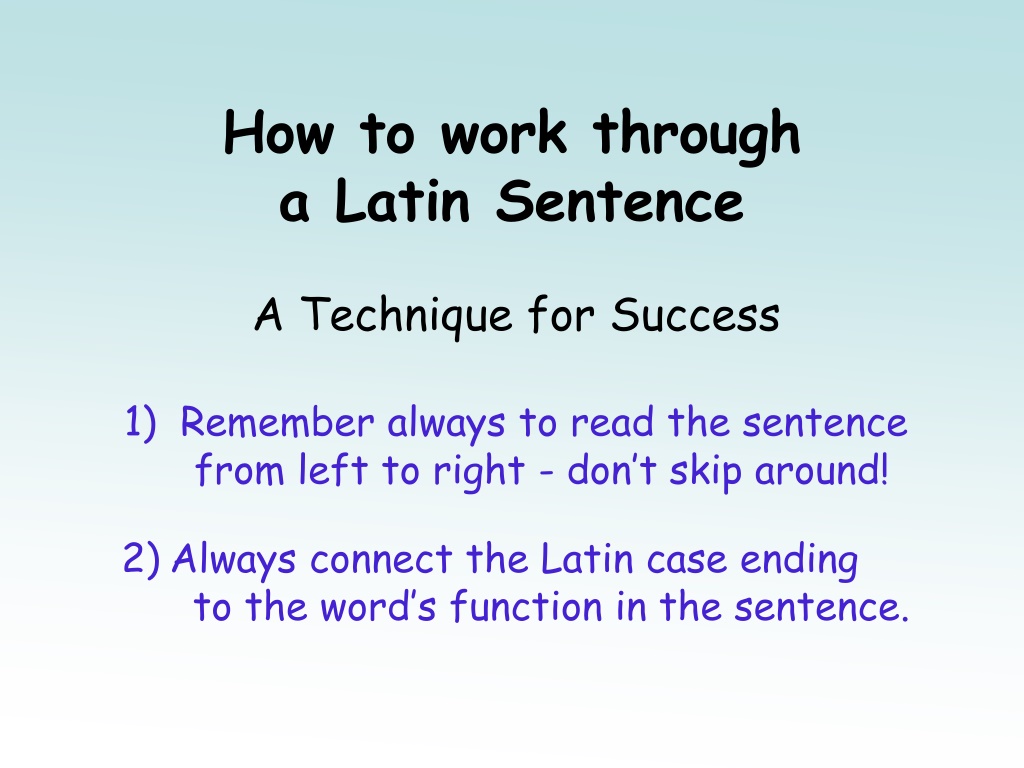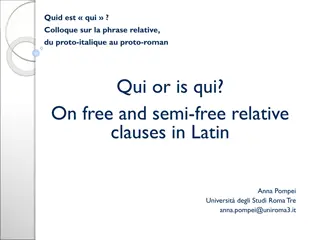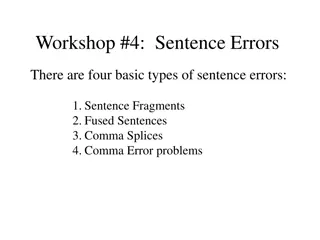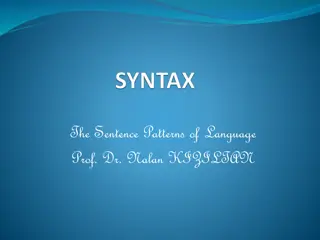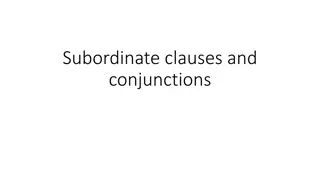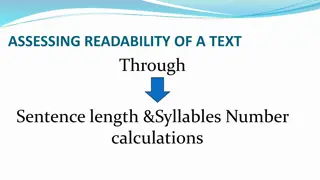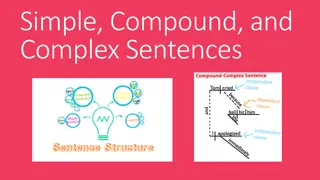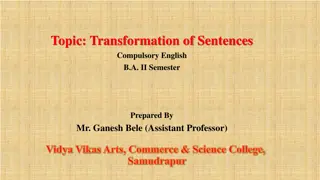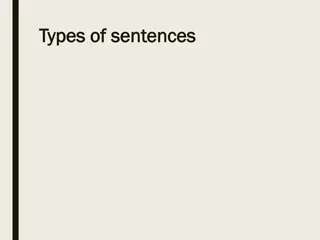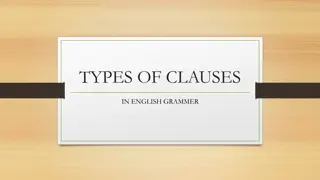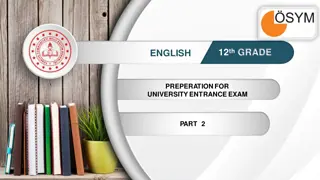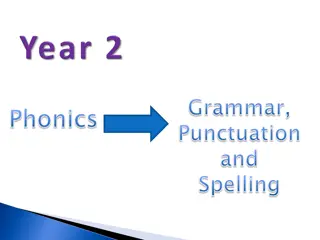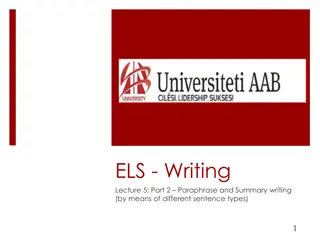How to Work Through a Latin Sentence: A Step-by-Step Guide
Reading Latin sentences requires a specific approach to connect the words with their functions and translations. By following a methodical process, beginners can gradually understand the structure and meaning behind Latin sentences. Starting from left to right and correlating Latin case endings with word functions can improve comprehension. This guide emphasizes the importance of patience and avoiding shortcuts in learning Latin sentence construction, leading to successful translation and interpretation.
Uploaded on Sep 21, 2024 | 0 Views
Download Presentation

Please find below an Image/Link to download the presentation.
The content on the website is provided AS IS for your information and personal use only. It may not be sold, licensed, or shared on other websites without obtaining consent from the author. Download presentation by click this link. If you encounter any issues during the download, it is possible that the publisher has removed the file from their server.
E N D
Presentation Transcript
How to work through a Latin Sentence A Technique for Success 1) Remember always to read the sentence from left to right - don t skip around! 2)Always connect the Latin case ending to the word s function in the sentence.
The order of words in a Latin sentence is rarely the same as its English translation, so beginning readers need a strategy to help relate Latin forms to English word order. What follows is a slow-motion method which simulates how an experienced reader s brain processes the Latin text. Be patient and give it a try! Once you get used to the Latin system, you won t have to keep doing this. The worst thing you can do as you start learning Latin is to take short cuts; this will cause a lot of trouble later on.
A complete sentence in English has certain predictable core elements which occur in a consistent word order: Subject + Verb +/- Object s +/- s As you identify the ending on a Latin word and the function it signals, fill in the appropriate blank in the English model. Nominative = Subject Accusative = Object Add a and the to your final translation as appropriate.
Subject + Verb +/- Object (Nom.) s +/- (Acc.) Am c d num amant. Item Form / Function Translation Nom. pl. / Subject Friends ______ +/- _______. Am c Acc. sg. / Dir. Obj. Friends ______ gift. d num amant 3rd pl. / Verb Friends love gift. Final translation: Friends love a gift.
Try this sentence and click to check your answer. Agricola agr s laudat. Item Form / Function Translation Agricola Nom. sg. / Subj. Farmer ______s +/- _______. Acc. pl. / D.O. Farmer ______s fields. agr s laudat 3rd sg. / Verb Farmer praises fields. Final Translation: The farmer praises the fields.
If the sentencehas an adverbial modifier, put it at the end of the sentence - then adjust your final translation. Agricola ab agr s in casam rosam portat. Agricola Nom. sg. Farmer ______s +/- _______. ab Preposition Farmer ___s +/- ___ from____. Abl. pl. Farmer ___s +/- ___ from fields. agr s in Preposition Farmer ___s +/- ___ from fields in/into ___. casam Acc. sg. Farmer ___s +/- ___ from fields into house. rosam Acc. sg. Farmer ___s rose from fields into house. portat 3rd sg. verb Farmer carries rose from fields into house. The farmer carries a rose from the fields into the house. Chapter 4
If the sentencehas an adjective, put it immediately before the noun it modifies. Put any genitive modifier immediately after the noun it modifies. Am cus agricolae pulchram rosam portat. Nom. sg. Friend ______s +/- _______. Am cus agricolae Gen. sg. Friend of farmer ___s +/- ___. pulchram Acc. f. sg. Friend of farmer ___s beautiful ___. rosam Acc. f. sg. Friend of farmer ___s beautiful rose. portat 3rd sg. verb Friend of farmer carries beautiful rose. The farmer s friend carries a beautiful rose. Chapter 5
